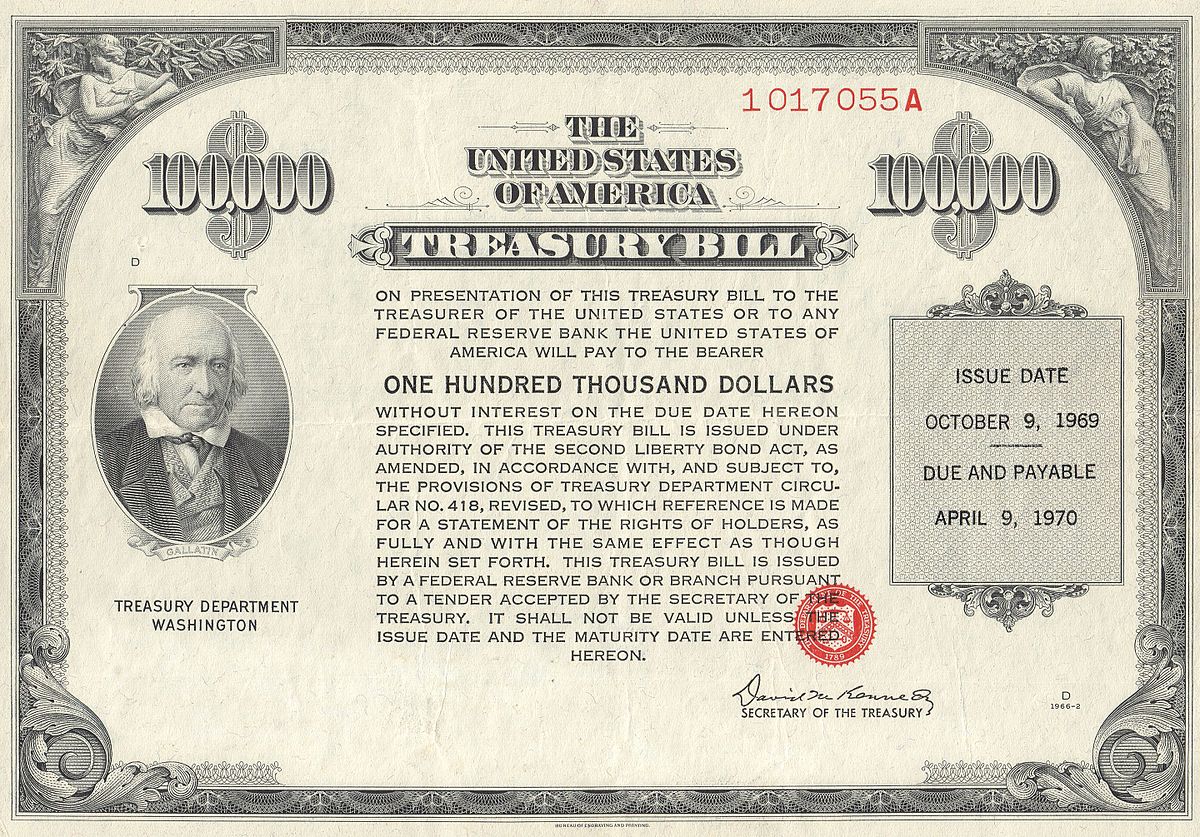Treasuries as an investment option
Treasuries is a single word for U.S. government debt obligations. Most often this name refers to three types of securities, which differ from each other by the period of circulation:
1. A treasury bill, or t-bill, has a maturity of no more than 1 year. Bonds for 12 months are not very popular, most often investors prefer bonds for 13 or 26 weeks, there is also a variant for 4 weeks.
2. A treasury note has a circulation period of 1 to 10 years.
3. A treasury bond. In most cases, this particular type is called a treasury note, and its circulation period is 10 to 30 years, but the most popular option is securities with a term of up to 20 years.
Open auctions are used for the initial offering of the listed debt instruments, and the procedure for each type of security has its own peculiarities. When buying treasury bills, a discount is given, and the nominal value of the paper can be from 1 thousand to 5 million dollars. In this case, the investor receives an income, which is equal to the discount amount. The latter, in turn, is the difference between the par value that the investor receives at maturity and the securities’ purchase price. For treasury notes and bonds there is also a system of open auctions, but in this case, the buyer receives interest regularly. The latter is paid at a fixed interest rate every 6 months. Investors offer their version of the interest rates at which they are willing to lend money to the government. The bid with the highest interest rate has priority over others. At the end of the circulation period, the buyer receives an amount equal to the face value of the securities.
For treasury notes and bonds there is also a system of open auctions, but in this case, the buyer receives interest regularly. The latter is paid at a fixed interest rate every 6 months. Investors offer their version of the interest rates at which they are willing to lend money to the government. The bid with the highest interest rate has priority over others. At the end of the circulation period, the buyer receives an amount equal to the face value of the securities.
It should be noted that all treasuries have their own secondary market, which makes the debt obligations guaranteed by the U.S. government highly liquid. In addition, treasuries act as a guarantee for a margin trading account used by brokers. In addition, bonds can be used as collateral for a loan.
An important feature of treasuries is that they are risk-free, which is why many investors prefer to invest in them over stocks or other assets. They also serve as a benchmark for other types of bonds, for example, during new issuances.
Treasuries have relatively low yields compared to other investment options, but this fact is offset by a number of advantages. They are available to both institutional and private investors and are invested in by central banks and other governments.










